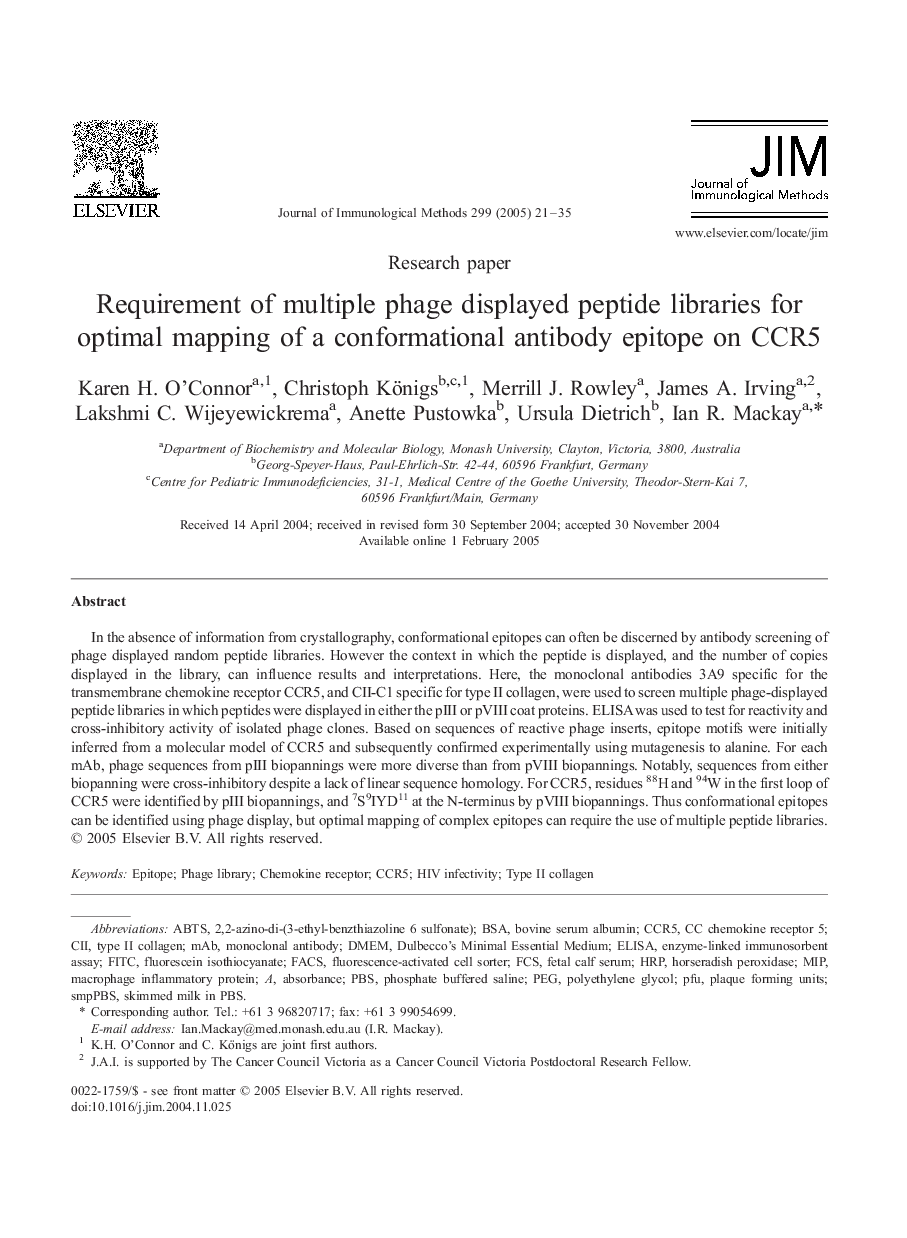| Article ID | Journal | Published Year | Pages | File Type |
|---|---|---|---|---|
| 9902328 | Journal of Immunological Methods | 2005 | 15 Pages |
Abstract
In the absence of information from crystallography, conformational epitopes can often be discerned by antibody screening of phage displayed random peptide libraries. However the context in which the peptide is displayed, and the number of copies displayed in the library, can influence results and interpretations. Here, the monoclonal antibodies 3A9 specific for the transmembrane chemokine receptor CCR5, and CII-C1 specific for type II collagen, were used to screen multiple phage-displayed peptide libraries in which peptides were displayed in either the pIII or pVIII coat proteins. ELISA was used to test for reactivity and cross-inhibitory activity of isolated phage clones. Based on sequences of reactive phage inserts, epitope motifs were initially inferred from a molecular model of CCR5 and subsequently confirmed experimentally using mutagenesis to alanine. For each mAb, phage sequences from pIII biopannings were more diverse than from pVIII biopannings. Notably, sequences from either biopanning were cross-inhibitory despite a lack of linear sequence homology. For CCR5, residues 88H and 94W in the first loop of CCR5 were identified by pIII biopannings, and 7S9IYD11 at the N-terminus by pVIII biopannings. Thus conformational epitopes can be identified using phage display, but optimal mapping of complex epitopes can require the use of multiple peptide libraries.
Keywords
ABTSCC chemokine receptor 5CCR5CIIFCSHRPMIPFITCmAbDMEMFACSPBSBSAbovine serum albuminMonoclonal antibodyEpitopeELISAEnzyme-linked immunosorbent assayAbsorbanceDulbecco's minimal essential mediumfetal calf serumPhosphate buffered salinefluorescein isothiocyanatefluorescence-activated cell sorterplaque forming unitsHorseradish peroxidasemacrophage inflammatory proteinpfupolyethylene glycolPEGPhage libraryType II collagenchemokine receptor
Related Topics
Life Sciences
Biochemistry, Genetics and Molecular Biology
Biotechnology
Authors
Karen H. O'Connor, Christoph Königs, Merrill J. Rowley, James A. Irving, Lakshmi C. Wijeyewickrema, Anette Pustowka, Ursula Dietrich, Ian R. Mackay,
